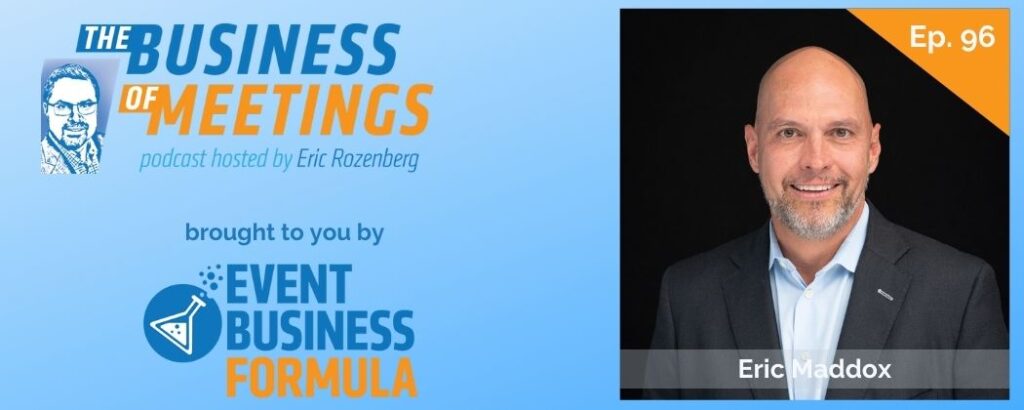We have the pleasure of speaking to someone truly fascinating today! Eric Maddox is the person who led the team in the capture of Saddam Hussein. He has had a tremendous impact on the world and has received numerous prestigious awards for his achievements!
In this episode, Eric tells his story, talks about his experiences, shares his methodology for the art of Empathy Based Listening, and discusses how that methodology allowed him to track down the exact location of the spider hole in which Saddam Hussein was hiding.
We hope you enjoy listening to our conversation with Eric Maddox today!
Eric Maddox’s bio
Eric Maddox is an author, motivational speaker, and consultant who teaches audiences worldwide about the art of Empathy Based Listening. He is the author of the book Mission: Black List No.1 (Harper Collins, 2008), which details his lead in the search and capture of Saddam Hussein.
After graduating from the University of Oklahoma in 1994, Eric enlisted in the U.S. Army, where he was a paratrooper in the 82nd Airborne Division, a jump master, and a graduate of Ranger School. He then reenlisted in 1997 as a Chinese Mandarin linguist and interrogator. In 2003, he was sent to Tikrit, Iraq, where he joined a Delta Force team searching for high-value targets on the infamous Deck of Cards. After five months and over 300 interrogations, Eric was able to track down and eventually give the team the exact location of the spider hole in which Saddam hid. For this, he was awarded the Legion of Merit, the National Intelligence Medal of Achievement, the Defense Intelligence Agency Director’s Award, and the Bronze Star.
Following the capture of Saddam, Eric was hired as the first-ever civilian interrogator by the Defense Intelligence Agency, where he went on to conduct over 2,700 interrogations of prisoners from 25 different countries.
Having served in the U.S. Army and Defense Intelligence Agency for 20 years, Eric now devotes his work full time to teaching what he learned during that time to audiences worldwide—the art of Empathy Based Listening.
Joining the military
Eric grew up in Oklahoma. After graduating from the University of Oklahoma in the late 1990s, he joined the U.S. Military, became a paratrooper, signed up to study Chinese Mandarin in the foreign language program, and trained to become an interrogator. He was working as an Intelligence Collection Officer against the Chinese government for the U.S. Military when 9/11 happened, and America went to war in Afghanistan and Iraq.
Unexpected orders
Three months into the war in Iraq, Eric received unexpected orders to join a Delta Force team to track down everyone in the infamous deck of cards in which Saddam Hussein was the Ace of Spades.
Interrogating prisoners
After joining the Delta Force team, Eric began interrogating the prisoners that were brought in. Even though none of the techniques taught in the military about interrogation worked, Eric was determined to figure out what it meant to be Iraqi, Sunni, and Shiite.
Trust
While listening to and communicating with the prisoners, Eric discovered that people subconsciously use communication to figure out how much they can trust one another.
The challenge
Everyone has their biases and agendas. The challenge for Eric was to overcome his own biases and agendas, so he could understand the perspective of others and get to know what the world meant to them.
Empathy Based Listening
He discovered that engaging with people on that level was empowering to them, and that level of empowerment was the key to making people willing to talk to him and work with him. He calls that Empathy Based Listening.
Cooperation
As a result of Eric focusing on the prisoners’ needs and what he could do for them, the prisoners became extremely cooperative throughout the 300 interrogations with the Delta Force team.
Finding Saddam
The cooperation of the prisoners led to the Delta Force team (that Eric was working with) capturing Saddam Hussein’s bodyguard. The bodyguard then led the Delta Force team directly to the spider hole where Saddam was hiding.
The first civilian interrogator for the Defense Intelligence Agency
As a result of the capture of Saddam, Eric got pulled out of the United States Army. Then, the Defense Intelligence Agency hired him as their first civilian interrogator.
The art of listening
Over the following ten years, Eric did 2700 interrogations and eight deployments of prisoners from 25 different countries. In all the interrogations, he focused on the art of listening.
A clear picture
When you listen to someone’s story, remove the biases of how you see their story. Then you will get a clear picture of how they see the world and how the world matters to them.
How to listen to someone if you want to sell them something
To sell something to someone, let them know that you are listening to them to get them. Once you have established that, they will tell you what they want and need without asking about the price.
Eric’s Influence Equation
Add your value proposition to the level of respect you show someone and the worthiness you see in them. Put that into the power of the empathy-based trust you have built with them, and divide all of it by what you fear in your relationship with them. (We tend to fear not making a connection or not understanding what someone needs.)
Eric’s process
Eric has a six-step process to get to understand people. The first step is to build their trust.
Priorities
If you are easily distracted, you need to have the priorities to guide your focus, because our brains cannot multitask.
Breadcrumbs (What you need to listen for when talking to a prospect)
Listen for and focus on the words and statements in every sentence your prospect most wants you to hear.
Building trust
To build the level of trust you need to make people want to partner with you, start your conversation with three minutes of empathy-based listening. Then, start picking up the breadcrumbs.
Presentations at events
Get to know what kind of overall experience the audience needs to get from the event. Then gear your presentation around that.
Zoom
Know that there is the potential for building as much trust with someone on Zoom as there is with meeting them face-to-face. Build the right mindset, stay focused, and prevent yourself from becoming distracted while talking.
Connect with Eric Maddox
Email Eric: info@ericmaddox.com
On his Website



